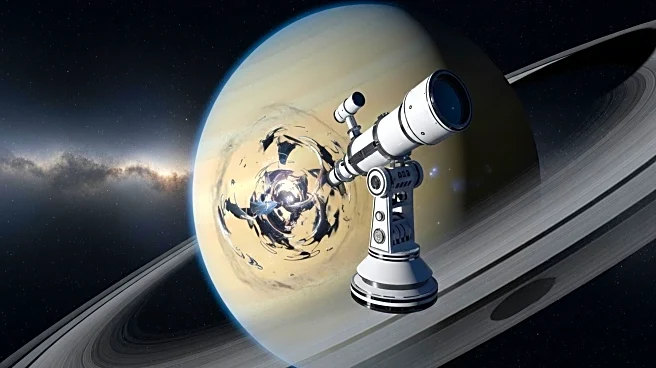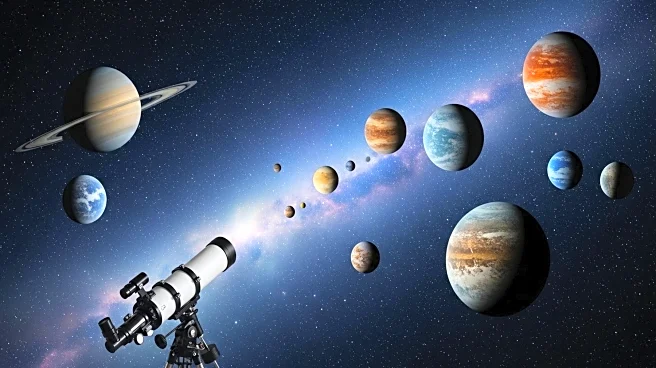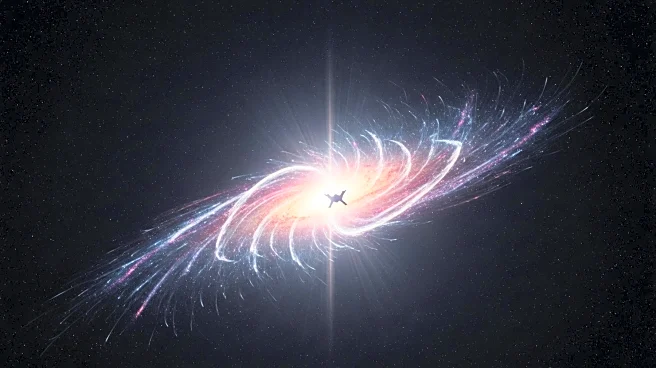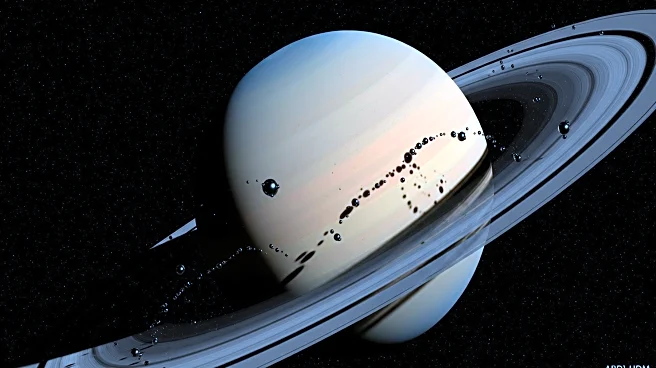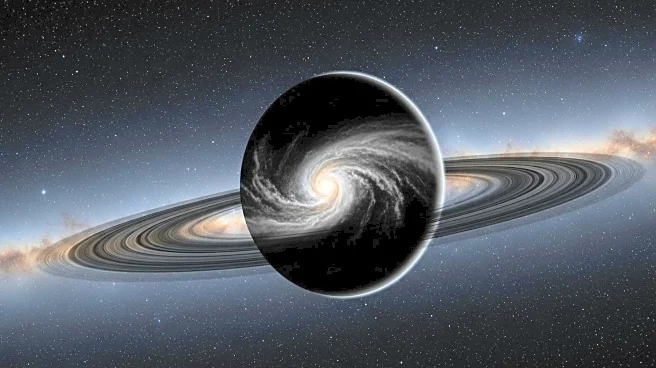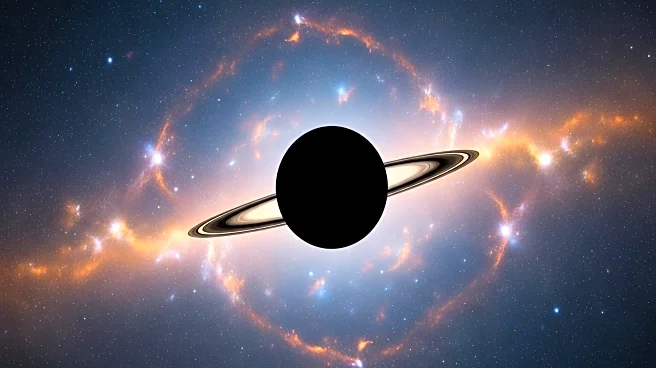What's Happening?
The James Webb Space Telescope has revealed unexpected patterns in Saturn's atmosphere, including bead-like structures and a star-pattern in the stratosphere. These findings were made during a 10-hour observation of Saturn's north pole, capturing over 3,600 light slices of various emissions. The patterns observed are unlike anything seen on other planets, with the auroral emissions being regulated by Saturn's internal winds rather than external space weather. The discovery of dark 'beads' in the ionosphere adds to the mystery, as they appear to be stable features rather than random occurrences.
Why It's Important?
These observations provide new insights into the atmospheric dynamics of Saturn, a planet that has long intrigued scientists. Understanding the unique features of Saturn's atmosphere can enhance our knowledge of planetary weather systems and atmospheric behavior in extreme environments. The findings could also have implications for studying the atmospheres of other gas giants and exoplanets, potentially improving our ability to predict atmospheric conditions on distant worlds.
What's Next?
Further analysis of the data collected by the James Webb Space Telescope will be necessary to understand the mechanisms behind these unusual patterns. Scientists will likely conduct additional observations to confirm the findings and explore their implications. The study of Saturn's atmosphere may also inform future missions to other gas giants, as researchers seek to compare atmospheric processes across different planets.

